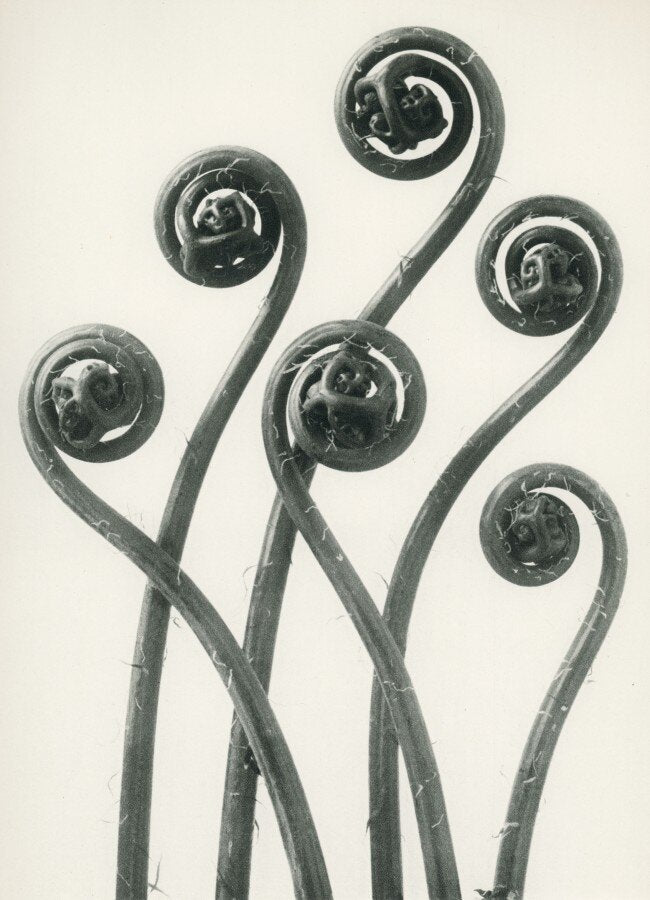
By Bryan Meador
Karl Blossfeldt
The Wondergarden of Nature
A professionally trained sculptor turned photographer, Karl Blossfeldt (German, 1865-1932) produced thousands of elegant macro-photographs of botanical structures during his time teaching at the Kunstgewerbeschule in Berlin from 1898-1930.

Before his work in Berlin, Blossfeldt worked completed apprenticeships at the ironworks and foundry in The Institute of the Royal Arts Museum. He left this prestigious program and traveled through Europe, eventually finding his way to Rome where he studied with Moritz Meurer, a German artist and theologian who believed that natural forms were reproduced in art.

Later in life, his detailed and visually austere photographs won him praise and acceptance from the artistic avant-garde. The notable gallerist Karl Nierendorf championed his work and exhibited his photographs alongside African sculptures in his gallery in 1926. Nierendorf went on to publish two monographs of Blossfeldt’s photographs: Urformen der Kunst (Art forms in nature), in 1928 and Wundergarten der Natur (The magic garden of nature), in 1932. Both works were enormously popular and helped to usher photography into the realm of fine art.

